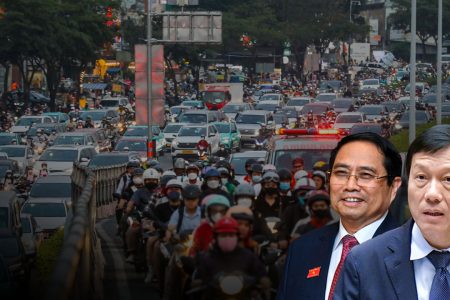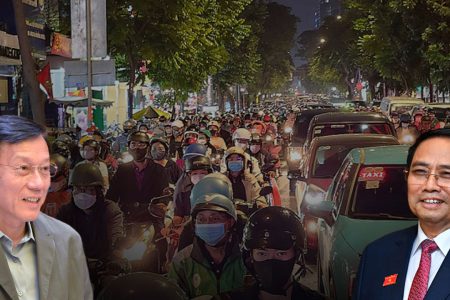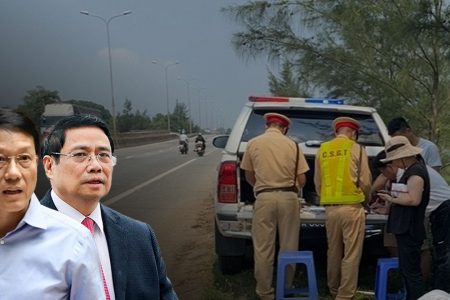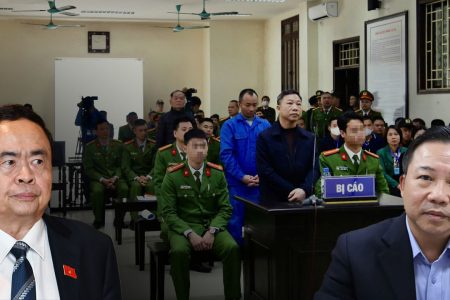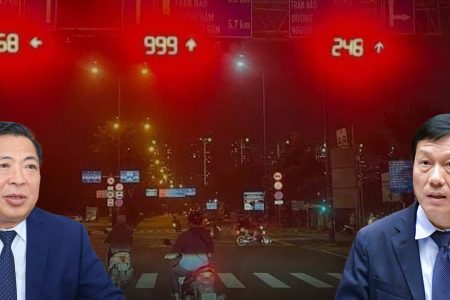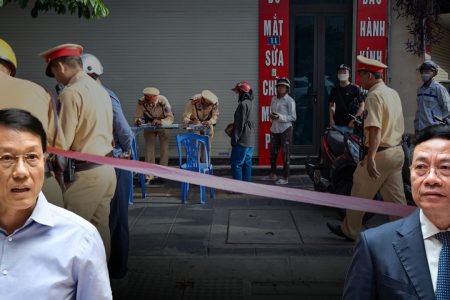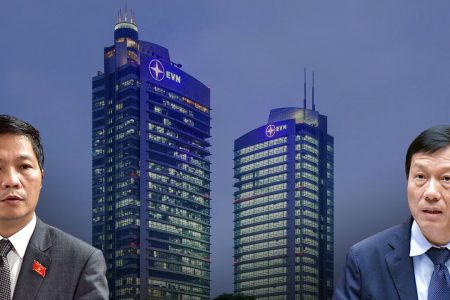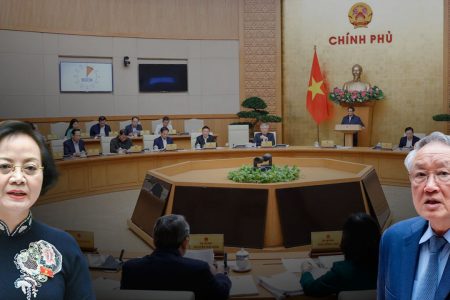The latest annual US report on global financial transparency states that Vietnam has not made progress in disclosing government revenues or information on the exploitation of natural resources.
The State Department’s report released on June 15 shows that Vietnam is not among 76 out of 141 countries assessed to meet the minimum standards of financial transparency.

Financial transparency, according to the US Department of State, is an extremely important factor in managing public finances effectively, helping build private market confidence, and strengthening economic sustainability. The State Department said in its latest report that financial transparency tells citizens how government tax revenues and other revenues are used and thus provides a window for citizens to look at the budget government as well as helping governments to take responsibility for their administration.
According to the US Department of State’s global criteria, countries that meet the minimum financial transparency requirements are when their governments make budget documents available to the public within a reasonable time. These documents must be complete and reliable.
The State Department’s report said that while the Vietnamese government has recently allowed the public to access executive budget proposals and implemented budgets, the Hanoi government did not publish year-end reports in a reasonable amount of time. Information on the debts of state-owned enterprises is not public.
Accordingly, although the Vietnamese government publishes documents on planned expenditures and revenues, it does not make the accounts off-budget transparent. In addition, although the Vietnamese government seems to abide by laws and regulations on awarding natural resource exploitation contracts or permits, there is basic information about the permission to exploit natural resources is not always publicly available in Vietnam.
According to the World Bank, financial transparency is particularly important in Vietnam as the public sector plays a relatively large role in the country’s economy. The bank assessed that Vietnam made significant progress compared to the 1990s in terms of financial transparency.

The global survey results on the Open Budget Publicity Index 2019 released in May this year showed that Vietnam’s public transparency and budget scores have increased sharply compared to previous assessments, increasing 23 points compared to 2017.
The Financial Times stated that this is the result of efforts of the Ministry of Finance during the past years and the purpose of publicity and budget transparency is to enhance community supervision and ensure efficiency in budget spending as well as tightening discipline requirements.
The US State Department conducts an annual review of the financial transparency of governments around the world that currently receive U.S. financial assistance to help ensure that taxpayer funds are used rational and also to provide opportunities for dialogue with governments on the importance of financial transparency.
In May, the US announced aid to Vietnam of $9.5 million to combat the COVID-19 pandemic, and a month earlier, the US provided $42 million to help develop the private economy in Vietnam.
According to Forbes’s assessment in April, the US has been Vietnam’s largest export market for more than a decade, with bilateral trade growing steadily at more than 20% in the last three years. Particularly in the first quarter of this year, the US was a major trading partner of Vietnam with a total turnover of $19.5 billion, an increase of nearly 20% of which Vietnam exported to the US nearly $16 billion, according to the latest figures from the General Customs Department.
12 projects with loss of Industry and Trade were negative, with a debt of over VND58.5 trillion
Not to mention the Cat Linh Ha Dong railway project is located in the middle of the capital, the 12 projects with industry and trade losses that have been headlined by the press from 2016 up to now are increasingly arising losses of thousands of billion VND for each project, because the large proportion is borrowed capital and almost being replenished, so the monthly interest of hundreds of billion VND has to be paid separately, not to mention the cost of depreciation and device rust damage due to inactivity.
The total initial investment of the above 12 projects is VND 43.67 trillion, and then it is approved to increase to VND 63.61 trillion (up 45.65%). In which: Equity is VND14.35 trillion, accounting for 22.56%; loan capital is VND47.45 trillion, accounting for 74.6%; the remaining 2.84% is from other sources. Of the total borrowed capital: Loans from domestic banks: VND 41.8 trillion, of which loans from Vietnam Development Bank (VDB) are VND16.86 trillion and foreign loans with Government guarantee are VND6.6 2 trillion.
The total accumulated losses of 10 factories that are currently manufacturing or which have stopped production as of December 31, 2016: VND16.13 trillion, of the remaining equity capital of these plants: VND3.98 trillion; Total assets of 12 factories are: VND57.6 8 trillion; Total liabilities are: VND55.06 trillion, of which VDB payable is VND10.63 trillion and government-guaranteed foreign liabilities are VND4.3 trillion.
Seven projects, businesses still lost or unfinished, stopped operating. There are 5/12 projects and enterprises having EPC disputes and problems with many contents negotiated many times with partners but still unsuccessful.
Outstanding loans of projects and enterprises at large credit institutions, most of them cannot pay debts on time. Currently, there are 17 commercial banks and 1 finance company providing credit for 12 projects with total outstanding loans as of December 31, 2019 of VND20.94 trillion. In which, medium and long term debt is VND17.17 trillion, short-term debt is VND3.77 trillion.
Stuck because not dare to sue Chinese contractors
Among 12 projects, enterprises that are behind schedule, ineffective in industry and trade sector, 5 projects, enterprises have disputes and problems in EPC contracts: Project to build DAP fertilizer factory No. 2 – Lao Cai, Ha Bac Nitrogenous Fertilizer Plant Renovation and Expansion Project, Ninh Binh Nitrogenous Plant Project, Dung Quat Shipbuilding Industry Factory Project, Phase 2 of the Company CP Thai Nguyen Iron and Steel. All of these projects are wholly or partially undertaken by Chinese contractors.
Disputes and problems mainly focus on issues: investors and contractors have not agreed on determining the settlement value due to changes in specifications, origin, number of equipment compared to the signed contracts and the amount of money arising out of the signed contracts.
After nearly 10 years from the commencement date, Cat Linh-Ha Dong elevated railway line “has 3 times capital increase, 8 times time extensions and never knows when to go operational,” VOV electronic newspaper put such a large headline.
The general contractor of Cat Linh – Ha Dong elevated railway project proposed $50 million to test the system and require full payment before handover, Thanh Nien newspaper on June 1 quoted the main report of the Vietnamese government.
Currently, the project has disbursed more than VND14.7 trillion in total over VND15 trillion, reaching 81.9%.
The Ministry of Transport and the Project Management Unit have repeatedly affirmed that the Cat Linh – Ha Dong Elevated Railway Project has completed 99%. But recent reports show that the remaining 1% is a “mountain” of problems, including claims of up to VND1.1 trillion from the Chinese general contractor.
The Lao Dong newspaper reported on June 2 that the project was a 13km bone, citing Vietnamese ambassador to the Middle East countries, Mr. Nguyen Quang Khai, comparing Cat Linh – Ha Dong with the long elevated railway project in Ethiopia. 31.1km with 39 stations and train speed can reach 70 km/h, also built by Chinese general contractor!
Accordingly, with the same standard, the same technology, the same capital … with Cat Linh – Ha Dong, but the investment capital of the overhead railway project in Ethiopia is only VND475 million and being completed after 38 months. While Cat Linh-Ha Dong is only 11km long, its investment is $868 million [4 times more expensive] and the date of operation is unknown. Ambassador Nguyen Quang Khai got the figures from the Ethiopian Ministry of Transport, saying that in just 9 months this project has created 13,000 jobs, earning $3 million.
This figure did not include $98.35 million that Hanoi will have to spend … to operate. Not to mention the $50 million that Chinese contractors have just asked us to continue to spend.
As for the effectiveness of the project, in December last year, the general contractor of China said that although it was not operational, but all the electric equipment in the station, rails must cost VND100 million per day. Not to mention about VND50 billion salaries and other expenses for about 2,000 Chinese and Vietnamese officials working on the project.
Not to mention VND14.5 billion per year to stimulate demand for tickets.
And, never counting the loan interest to pay each year up to over VND600 billion.
Thoibao.de (Translated)




